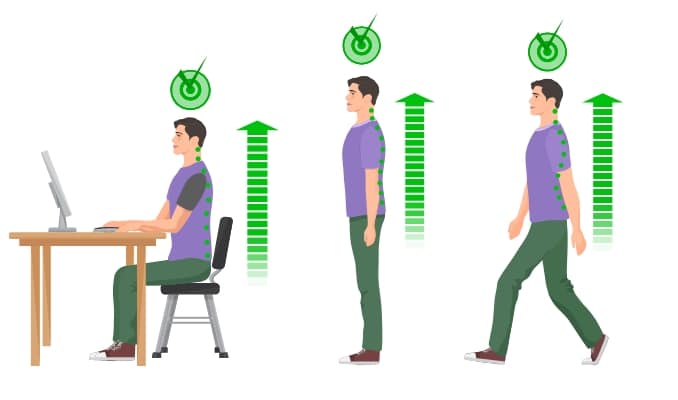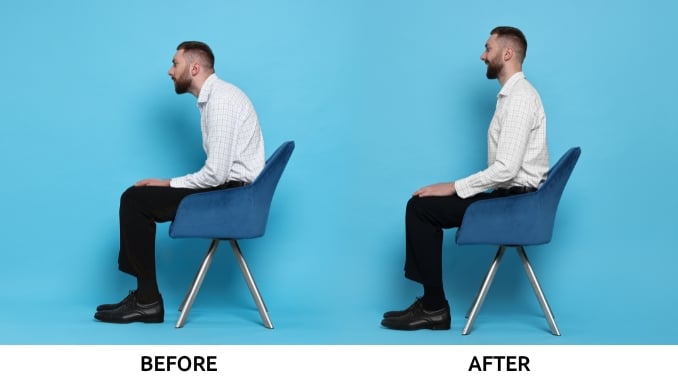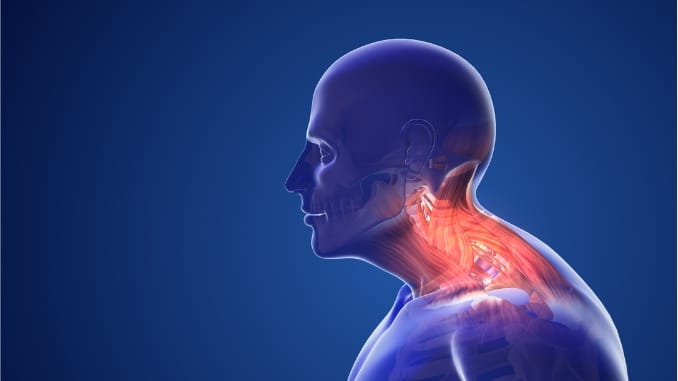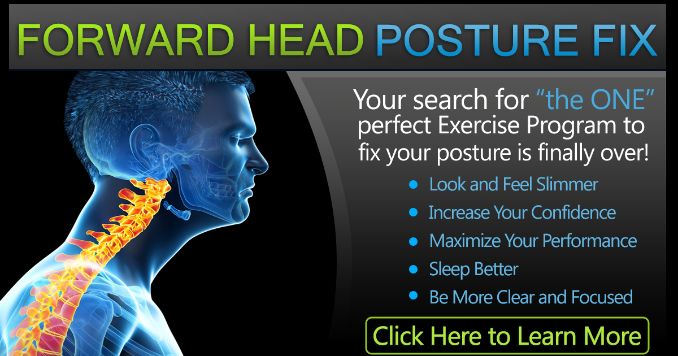The human body is a complex system that can be difficult to understand. The body must maintain a three-dimensional balance to function properly. This balance involves the harmonious coordination of muscles, bones, and joints in all directions, ensuring stability and efficient movement.
One way the body achieves this balance is through the use of muscles that work opposite one another, called agonists and antagonists.
If an individual has a forward head posture, then the muscles involved are not balanced, which can result in a variety of health problems, including muscle tension, headaches, fatigue, and back pain.
Improving your posture will help to relieve these symptoms. It may also result in numbness or tingling sensations in the arms and hands.
Here’s a great exercise to address poor posture and fix forward head posture.
Effects of Forward Head Posture on Health
“There’s a normal curve of your neck, although when you’re looking down all day long, your curve gets straight or even reversed, putting a lot of stress and pressure on the nerves underneath the skull.”- Dr. Allan Mandell
This misalignment, known as forward head posture, can have several adverse effects on overall health:
- Muscle Strain and Fatigue: Constant forward head posture puts strain on the neck and shoulder muscles, leading to muscle tension and fatigue.
- Chronic Pain: Increased tension in the neck, shoulders, and upper back can result in persistent pain and discomfort.
- Headaches: Tight muscles in the neck and shoulders can put pressure on nerves, causing frequent headaches.
- Nerve Compression: This posture can lead to nerve compression, causing numbness or tingling in the arms and hands.
- Reduced Lung Capacity: Forward posture can compress the chest and lungs, decreasing the efficiency of breathing.
- Poor Blood Circulation: The misalignment affects blood flow, contributing to feelings of fatigue and muscle weakness.
- Spinal Compression: Increased pressure on the spine, particularly in the mid-back region, can lead to stiffness and discomfort.
- Decreased Energy and Mood: Reduced oxygen intake and chronic discomfort may cause fatigue and impact mood and energy levels.
How to Test Head Posture?

Many individuals may not be aware of the different types of good posture, which can be crucial for maintaining overall health and well-being. Recognizing your body’s natural movements and alignment can help you determine whether you are maintaining an upright position with good posture.
Posture can be categorized into three primary types:
1. Erect (Forward-Facing)
This posture involves standing or sitting with your head and shoulders aligned and facing straight ahead. It promotes optimal alignment of the cervical spine and minimizes strain on the neck and shoulder muscles, reducing the risk of neck pain and tension headaches.
2. Neutral (Midline-Facing)
In this posture, your body is balanced, with the head positioned directly over the shoulders and hips. This alignment ensures proper weight distribution of the head, minimizing stress on the cervical spine and neck muscles.
3. Listless/Swayback (Retracted)
It features a backward tilt of the pelvis and a forward positioning of the head and shoulders. It often results from prolonged slouching, leading to muscle imbalances and increased tension in the back muscles.
Understanding these posture types and their impact on your body can help you identify any deviations from good posture and take corrective measures.
Regularly assessing your posture and incorporating strengthening exercises, such as chin tucks and shoulder blade retractions, can help improve forward head posture and enhance overall neck posture and respiratory function.
To test for forward head posture, follow these steps recommended by certified postural alignment specialist Mike Bosh, also known as the “Posture Guy.”
“Place your back against the wall. If the back of your head can’t rest against the wall without looking up, this is an indicator that you’re suffering from the forward head posture.”

This simple test helps identify forward head posture by checking the alignment of your head in relation to your spine. If your head naturally tilts forward, it suggests that the cervical spine and neck muscles are not in their optimal position, leading to potential strain and discomfort.
Recognizing this misalignment is the first step towards implementing corrective exercises and improving overall neck posture.
Improved Forward Head Posture
You’ll notice immediate improvements in your posture as soon as you correct it. After correcting the position [1] of your head and neck, you’ll experience an increase in circulation to other areas of your body.

Before Correction:
- With forward head posture, you may experience chronic neck pain and stiffness due to cervical spine misalignment, which can lead to increased neck muscle strain.
- Poor posture can lead to tension headaches and fatigue as the muscles at the base of your skull are under constant stress. This can also affect your mood and energy levels throughout the day.
After Correction:
- Proper head and neck alignment alleviates pain, enhances mobility, and restores the cervical spine’s natural curve, improving your posture and balance.
- With improved forward head posture, tension headaches diminish, and you often report higher energy levels and an enhanced mood. Your head is better supported, which reduces muscle strain and improves your overall well-being.
Poor Postural Habits
If you have poor postural habits, you can expect significant improvements within just one week by consistently performing specific exercises designed to fix forward head posture.
By dedicating a few minutes each day to these exercises at home, you can begin to alleviate neck pain, reduce muscle strain, and enhance overall posture.
These exercises focus on strengthening the neck and upper back muscles, promoting a more balanced alignment of the cervical spine.
Incorporating these simple yet effective routines into your daily life can significantly improve your posture and well-being.
Conclusion
It is really common when it comes to driving, sitting, watching TV, or playing on your phone [2]. If you have a forward head posture, your head and shoulders are coming forward. Your mid-back is being rounded, which puts a lot of pressure on the mid-back, shoulder, front of the shoulder, and neck areas.
After it has been fixed, your head and shoulders are back to their correct position, where your head is on top of your shoulders and hips.
So there you go, that’s what forward head posture [3] looks like before and then after you do something about it.
Aftercare is important because it can be a symptom of many underlying conditions. To effectively treat this condition, it’s essential to understand what it is and its underlying meaning.
If you want to fix it, then click here to check out the Forward Head Posture Fix Program.
Frequently Asked Questions
Can you actually fix forward head posture?
Yes, forward head posture can often be corrected through targeted exercises and mindful posture adjustments. Consistently performing exercises that strengthen the neck and upper back muscles can help retrain the body to maintain proper alignment, relieving strain and improving overall posture.
How long does it take to recover from forward head posture?
Recovery time varies depending on the severity of the posture and consistency in performing corrective exercises. For mild cases, you may notice improvements within a week of daily practice. More pronounced postural misalignments may take several weeks to months of regular exercises to see significant changes.
Can forward head posture become permanent?
If left unaddressed, forward head posture can lead to lasting muscle imbalances and joint strain, making it more challenging to correct over time. However, most cases can still benefit from corrective exercises and improved posture habits, even after years of poor alignment.


